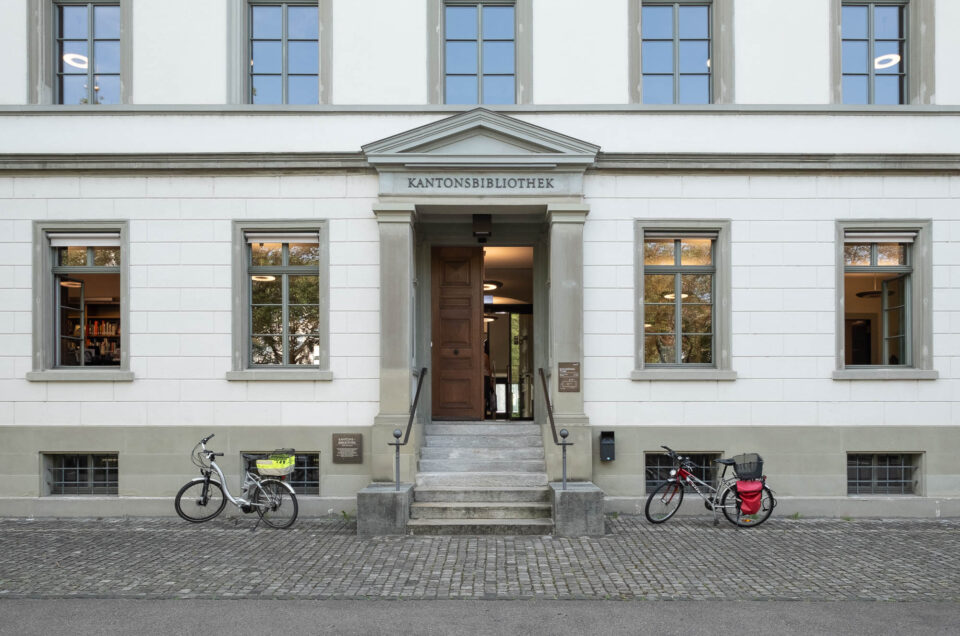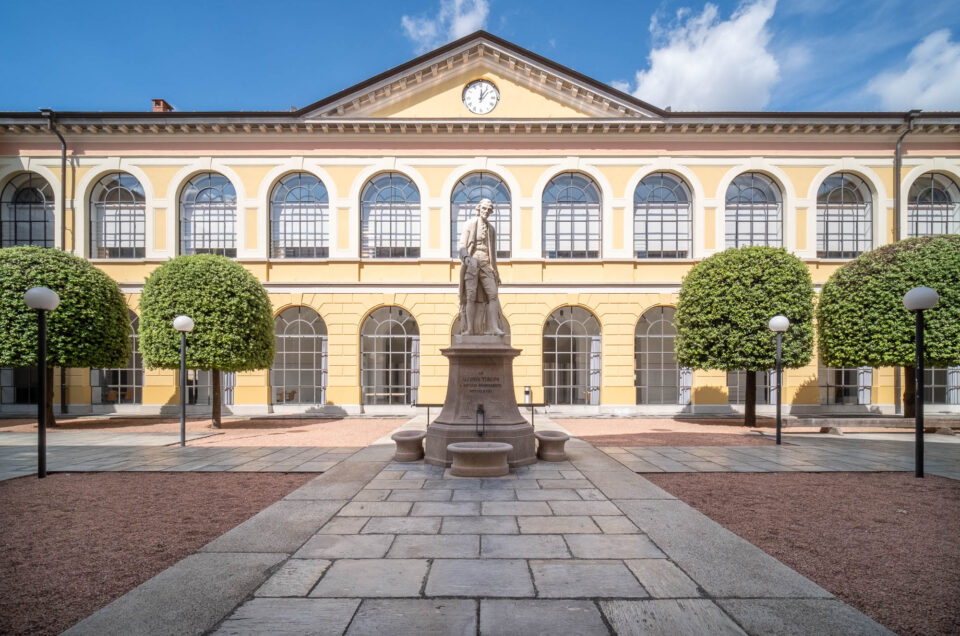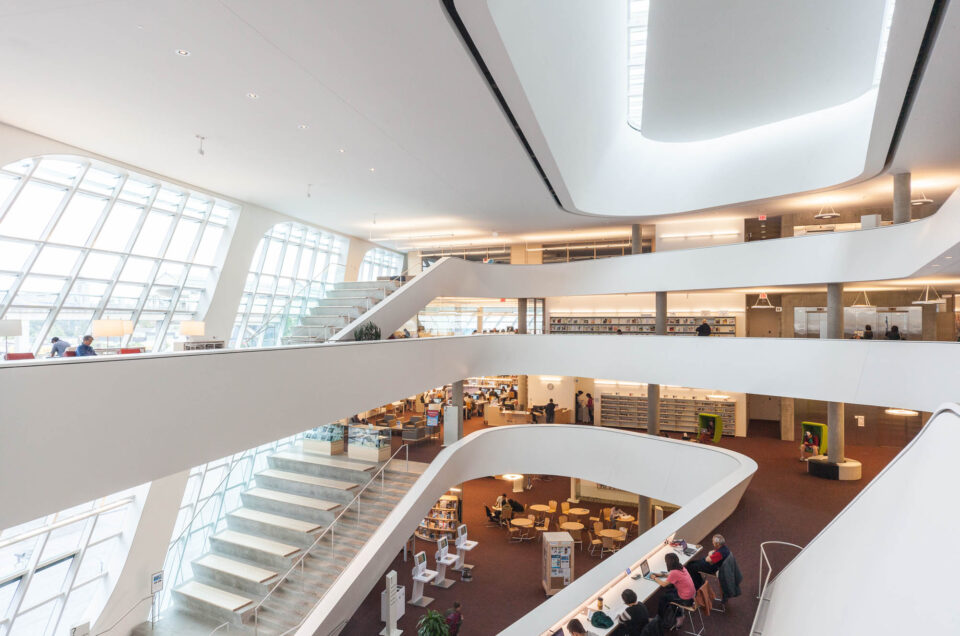In the 19th century, the Mendrisiotto region of Ticino, Switzerland was a notable silk producing region, thanks to a climate conducive to the culture of mulberry vines for feeding silkworms. At the height of this activity, the valley had up to 32 silk spinning mills. Among them was the Torriani-Bolzani mill, which operated from 1873 until 1931, when it was absorbed by the competing Torricelli mill in Lugano. The complex, in which 350 workers (mostly women and children) had toiled, was then used for housing and small scale manufacturing. By 1982, the former spinning mill had become insalubrious, was closed by the city and slated for demolition.
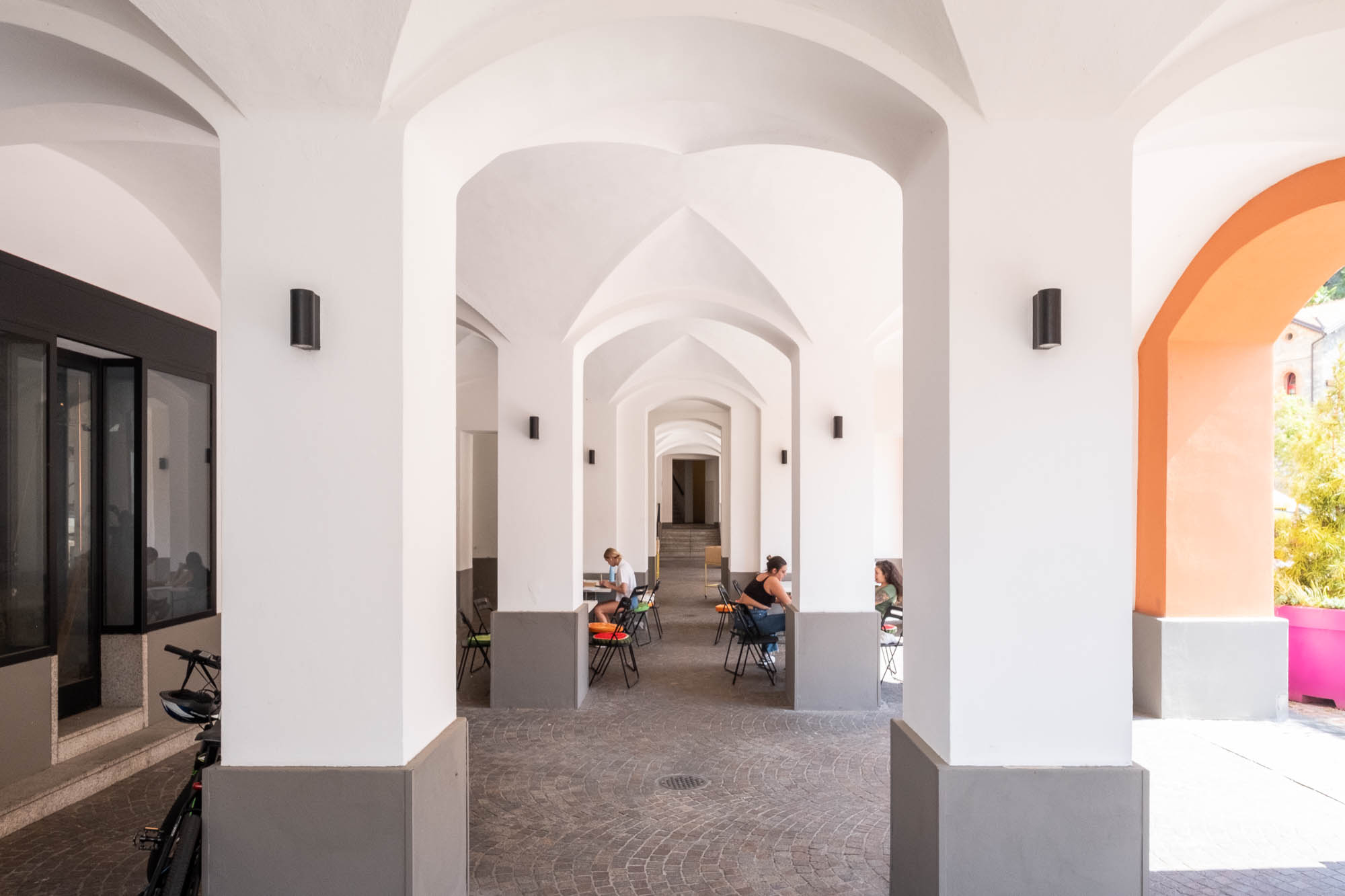
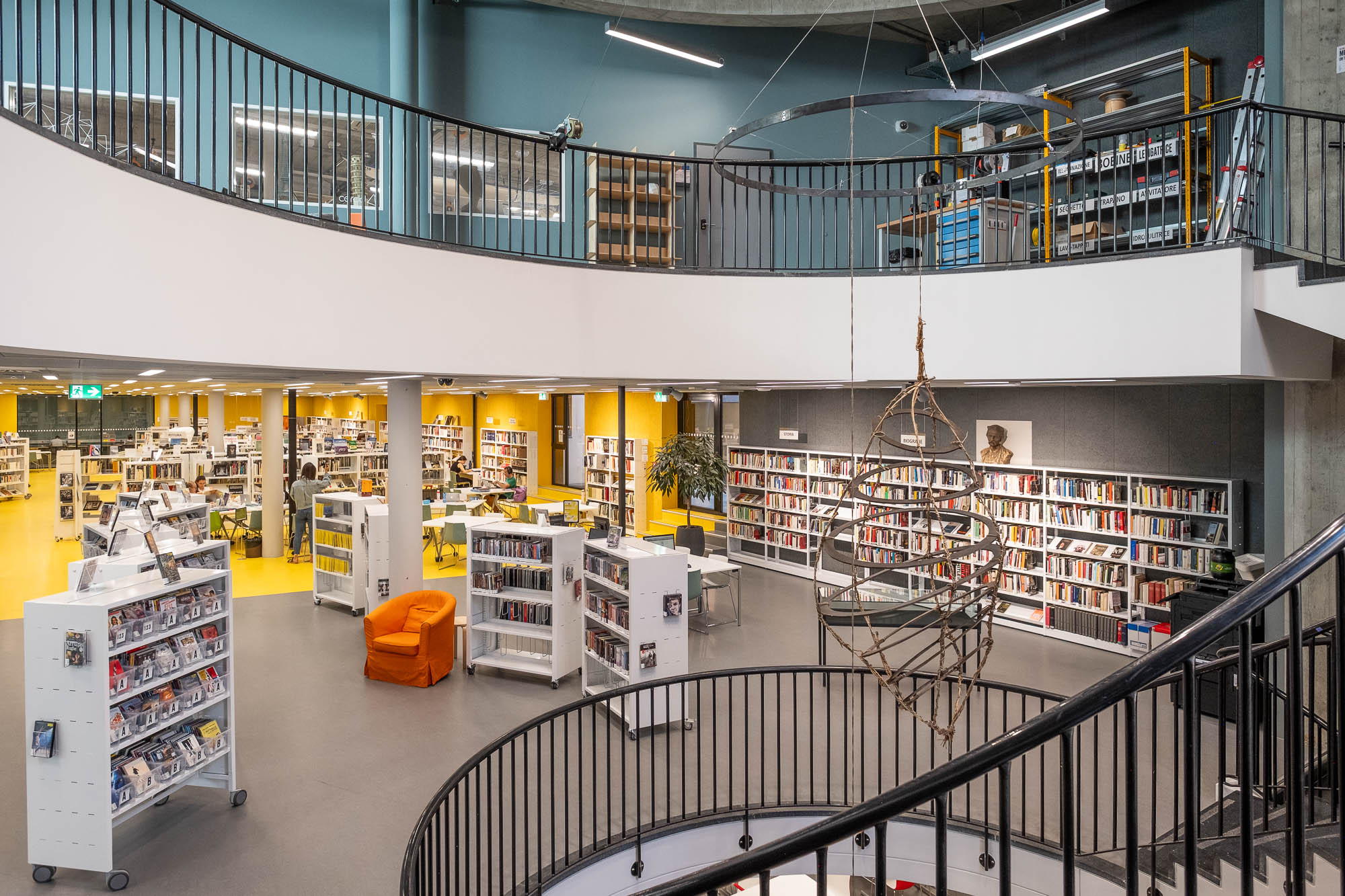
Local investors however purchased the building and tasked architect Ivano Gianola to transform it into a shopping centre and modern housing. Gianola was careful to maintain the original envelope of the former spinning mill, a nod to the industrial heritage of the 19th century that marked the transition from agriculture to industrial production in the region. Most of the original industrial structure was converted into apartments. At the back was a new build for the Innovazione (later Manor) department store and an underground parking with an access ramp. The shopping centre opened in summer 1988. It had over four storeys of retail, a restaurant, and parking for 150 cars.
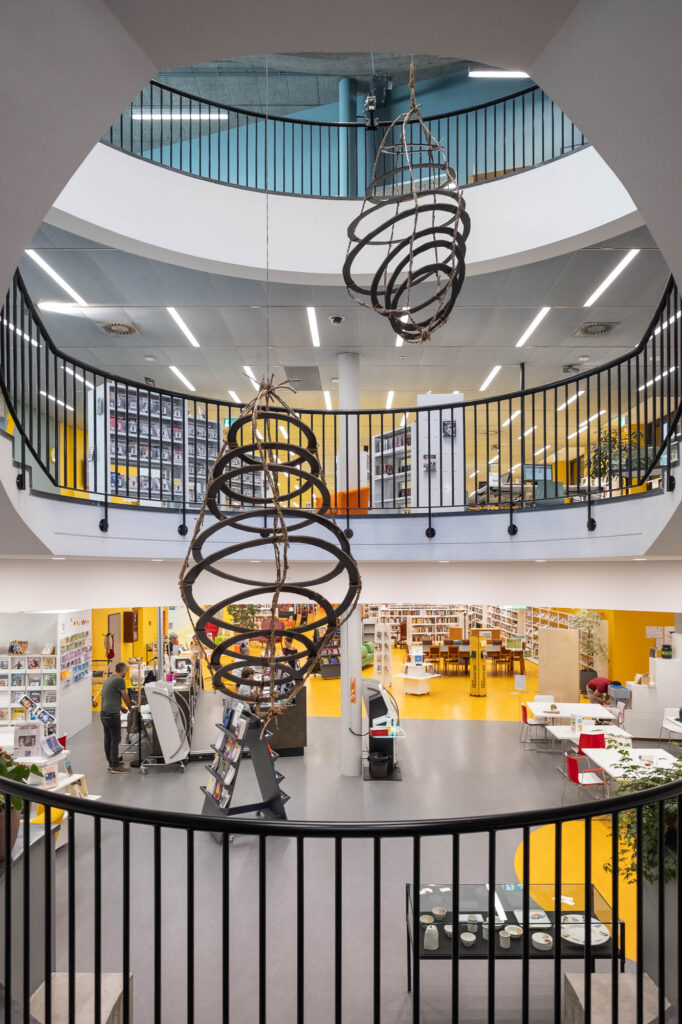
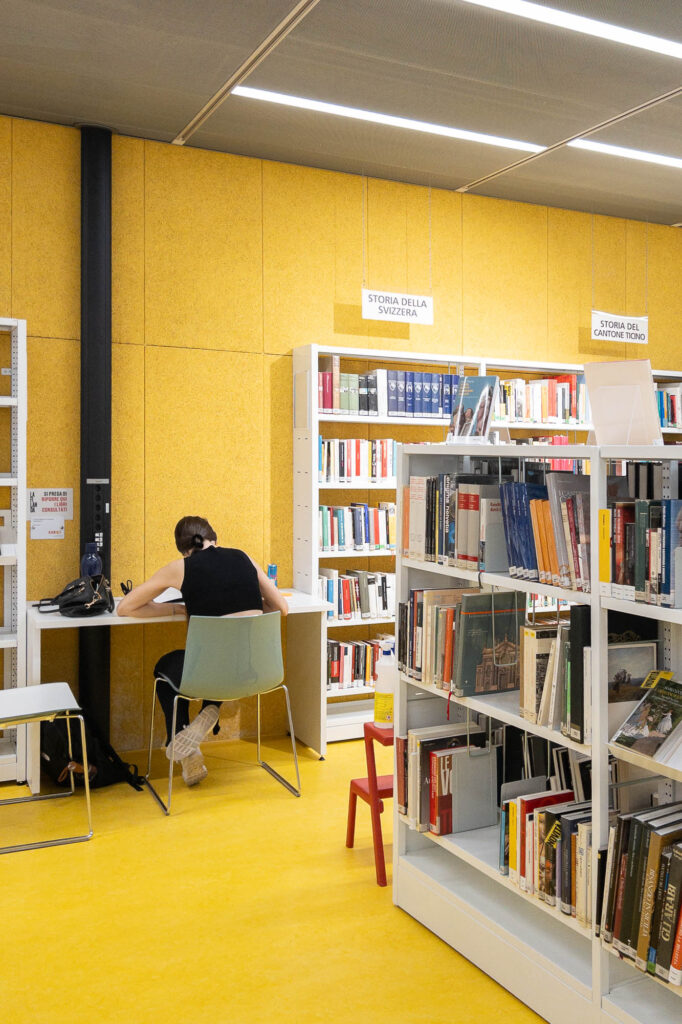
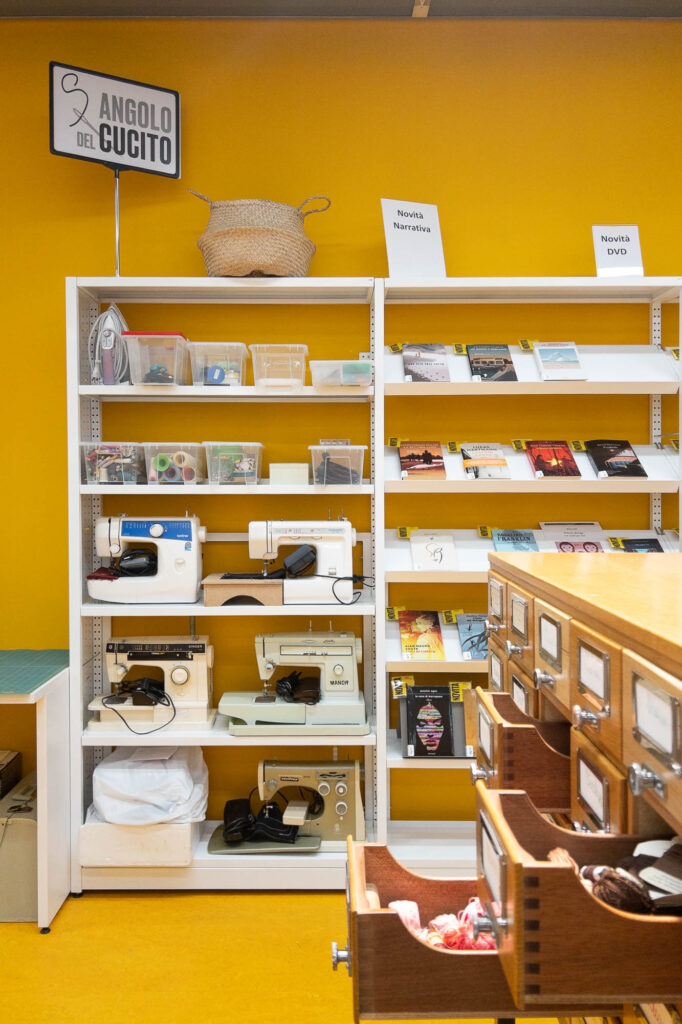
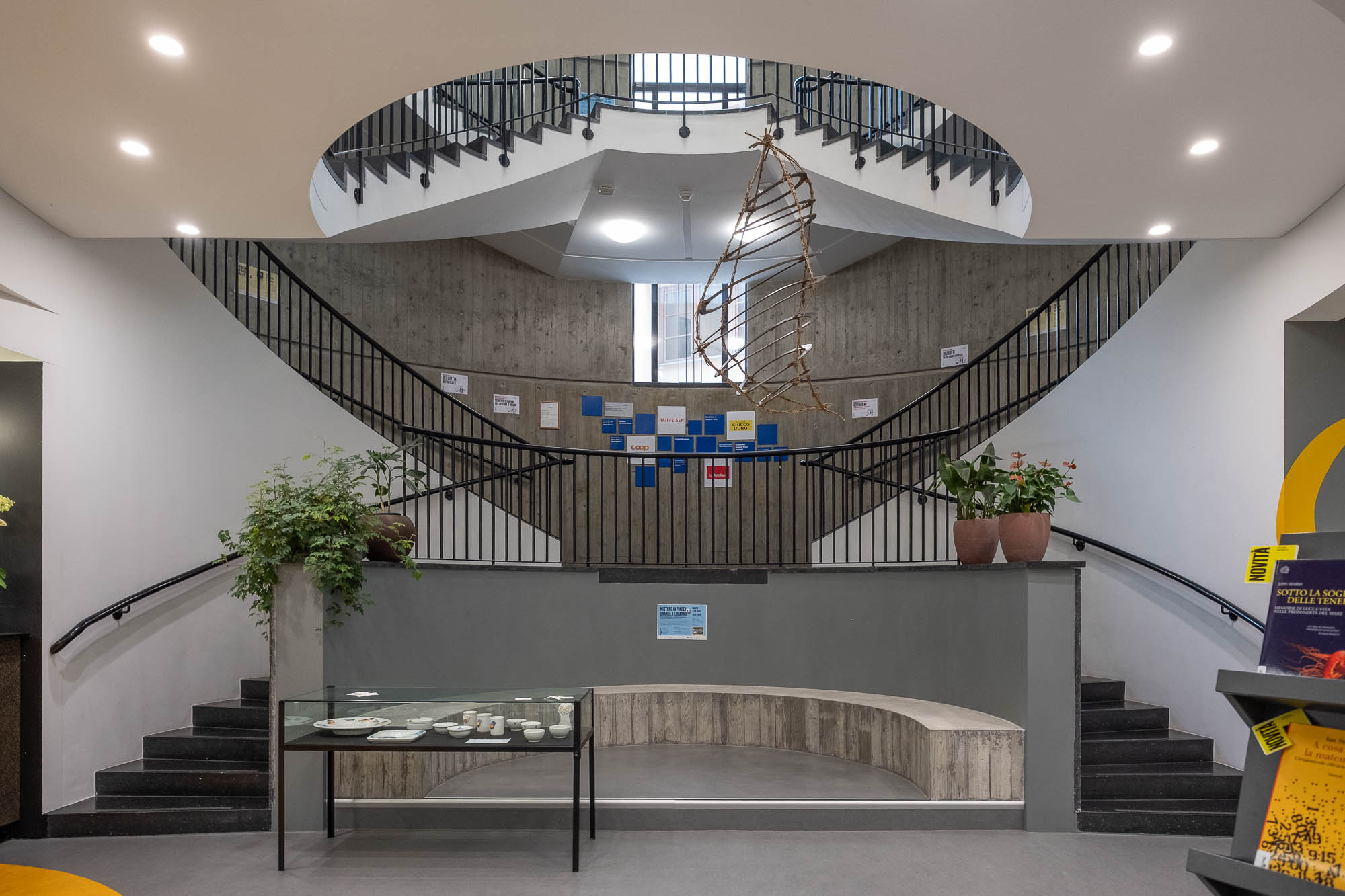
The Manor store closed in 2008 after two decades of activity, and the future of the Filanda was again in jeopardy. That same year, the Canton of Ticino also announced that it would close the Mendrisio branch of the Cantonal Library, citing budget constraints. Alarmed that the city would lose its only public library, a group of concerned citizens succeeded in halting the decision and find sponsors to develop a new library and cultural centre.
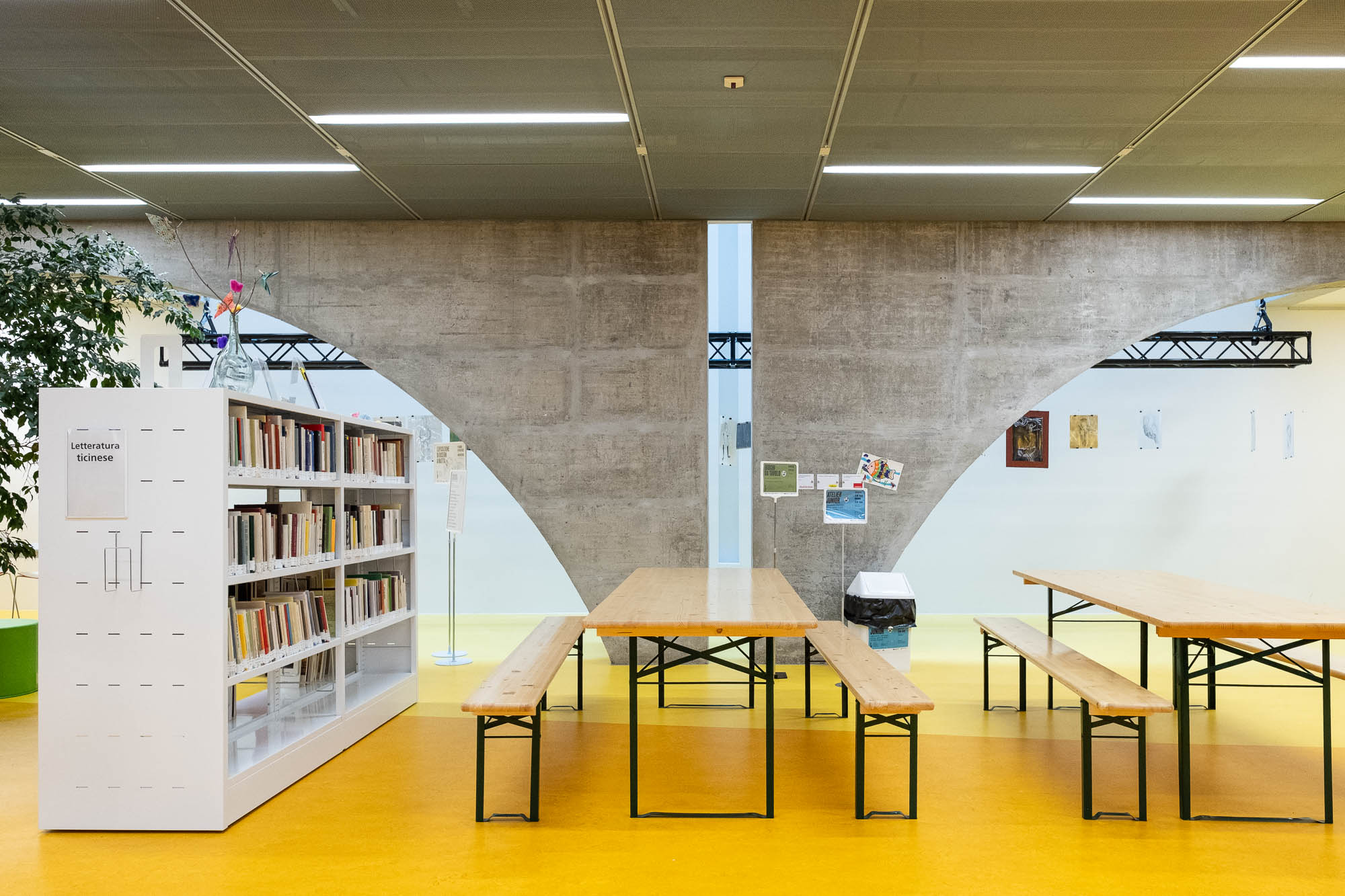
After an uphill political battle, work on the new centre finally started in 2015 with the removal of the shopping centre’s former escalators. Led by Mendrisio architect and sculptor Anne-France Aguet, the transformation lasted until 2018, when the new library and cultural centre, dubbed La Filanda after the industrial heritage of the site, was inaugurated.
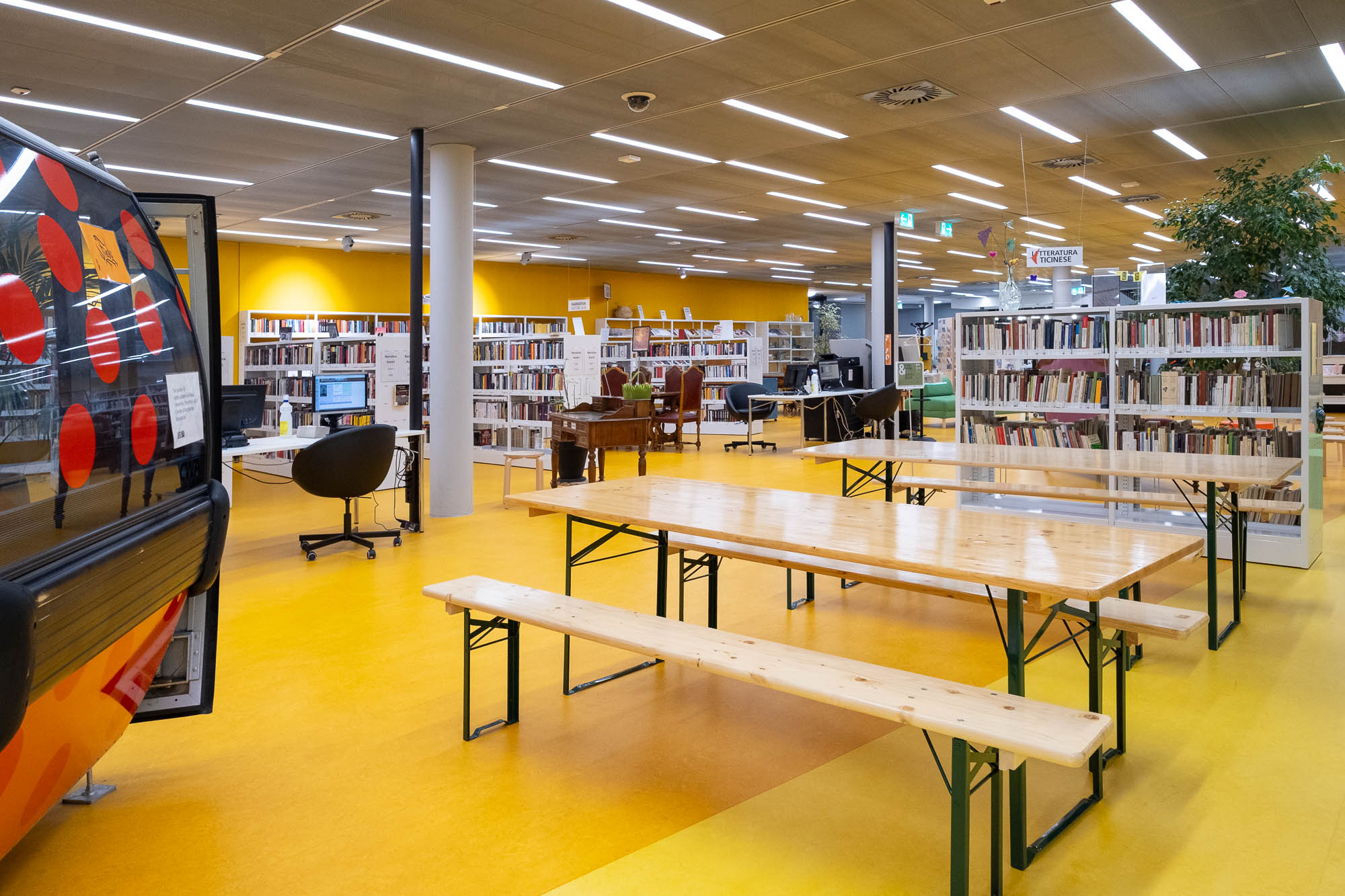
The configuration of the space as a former shopping centre, with very little natural light, was challenging but Aguet managed to make the most of it by replacing the escalators with a light well and using bright light colours. Tongue-in-cheek furnishing touches, such as supermarket carts and shopping baskets recall the library’s mercantile past. Together with large potted plants, gondola cabins and picnic tables work to bring some Alpine outdoor quality deep inside the library in a playful way.

This post is part of a series on adaptive reuse in libraries. See the list of such projects I am maintaining or view other posts in this series.
The images shown here date from my visit in September 2022. Grazie al team della biblioteca per l’accoglienza calorosa!


